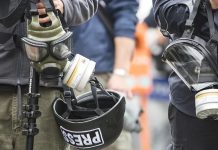Peshawar: The rapid decrease in the breed of Sher Mahi fish has posed serious threat to the species vanishing from the rivers in Khyber Pakhtunkhwa (KP) but the department concerned has failed to conduct research and establish its hatcheries to protect the dying species.

Due to unique ecology and taste, Sher Mahi is the highly exposed species to global warming, environmental pollution and illegal fishing but there is no research wing at KP Directorate of Fisheries to conduct study and adopt mitigation techniques for the enrichment of this commercially beneficial species in the province.
The fishing of Sher Mahi in a large number from various parts of the province is in full swing, however, the rise in temperature and increased aquatic pollution has reduced its breeding sites to a great extent.
This species found in Kabul and Indus rivers mostly in the areas of Mardan, Peshawar, Charsadda and Nowshera, central districts of KP.
Clupisoma Naziri, biological name of Sher Mahi, is not only famous in KP but people of other parts of the country also like it to taste in fish huts situated at Kabul River banks.
Due to less spines and good taste, local community prefers it. Sher Mahi sells at a higher price and that is the reason why fishermen prefer to catch it.
Decrease in Sher Mahi population
A 40-year old fisherman, Nawab Khan, says that he would catch about four to five kilograms of Sher Mahi in a single visit during the period of April to October in Kabul River but last year in July and August he could not get the desired quantity of Sher Mahi due to heavy rainfall and floods in the river.
Khan, a resident of Charsadda added, “Kabul River flows from Chitral district of northern Pakistan and enters into Afghan Eastern province Kunar, therefore, the fish is caught both in Pakistan and Afghanistan during spring and summer”.
“There is a great demand of Sher Mahi in winters so we import the fish from Afghanistan to fulfill the demands of local fish huts and hotels in Peshawar valleys”, Khan explained.
He added that during last two decades, 70 to 80 per cent decline in the specie was observed.
Though, the government have established private fish forms and breeding sites of other fish species but not for Sher Mahi.
Fishermen would earn more money with the fishing of Sher Mahi in huge quantity but the mysterious decrease in its production has minimized their earning.
Muhammad Asif, 38-year old, a wholesale dealer at Peshawar fish market, said that 10 years back he purchased more than 80 KGs of Sher Mahi a day at a reasonable price from local fishermen but now hardly get half of it.
“When the Sher Mahi was fished at huge quantity, the price was reduced to Rs. 250 per kg, but these days, it is sold at Rs. 1000 per kg in hotels and fish huts due to reduction in its population”, he said.
According to Zaigham Hasan, associate professor at department of Zoology in University of Peshawar (UoP), during summer season Sher Mahi moves to upper parts of the province like river Swat, Kabul and Indus.
He further said, “It has become an essential sea food in hotels situated at province rivers’ banks. As winter approaches, it gradually moves to its downstream in river Indus from river Swat and Kabul”.
“The general existing status of natural aquatic resources reveals that near in future, due to climate change and environmental constraints, Sher Mahi will not remain abundant”, he added.
According to Zaigham Hasan, the change in precipitation pattern, rise in temperature causing frequent floods and land sliding in mountainous regions of the province are the main drivers of destroying breeding sites of Clupisoma species.
He said that adaptation of alternative measures to prevent Sher Mahi is cry of the hour.
Illegal fishing of Sher Mahi
Ameer Hamza, the Deputy Director at the KP Directorate of Fisheries told that not only global warming and climate change posed serious threat to the species but illegal fishing and water pollution also play a key role in the reducing Sher Mahi fish in the region.
While talking about illegal fishing, he explained mostly fishermen in various parts of the province used toxic materials, dynamites, electronic shocks through portable generators and small holes fishing nets to catch Sher Mahi.
This illegal practice kills many small fish, destroys remaining larvae and eggs, and harmed its ecosystem, too.
Commenting on the close season, Hamza described, “August is a breading time for carp fish and during the season, fishing destroys fish larvae, eggs and small fish as well”. The carp fish is a group or a family of fresh water fish usually found in Asia.
According to fisheries rules 1976, the catch in this season is illegal but even then, many people go for it.
He added that during July 2016 to June 2017, about 334 persons were apprehended in Peshawar, Charsadda and Nowshera area on the charges of illegal fishing. After the court decision the department received about Rs. 259,600 compensation fees from them.
Impact of Polluted Water on Sher Mahi
About the impact of environmental pollution on the Sher Mahi, Ameer Hamza explained that majority of industrial units in the province are located within the watershed of river Swat, Kabul and Indus River, adding that most of the industries including sugar mills, distillers, edible oil factories, textile mills, woolen mills chemical and pharmaceutical factories and others have no water treatment plants within Peshawar valley.
He further said that toxic water of those industries drains out into rivers, thus, the same contaminated water becoming a serious threat to Sher Mahi life.
Data obtained from Statistics Department Fisheries Directorate reveals that six hatcheries of trout fish and five for crap fish farming have been established in various parts of the province.
The number of private fish farms of various species have reached to 1146. Though, various farms and hatcheries have been established but there is no a single farm or breeding site of Sher Mahi exist in KP.
Artificial breeding of Sher Mahi
Fawad Khalil, Assistant Director at Directorate of Fisheries says that in the natural water of Peshawar valley, more than 35 fish species are found and Sher Mahi is one of them.
The family of crap fish including Raho, Masher, Malie are propagated by the local community for commercial purposes.
“For last five years, population of Sher Mahi has been declined in various major rivers of the province. Super floods of 2007 and 2010 in Khyber Pakhtunkhwa adversely affected breeding grounds of the species and that is why significant drop is being observed in its population”, he admitted.
However, he said that the population of Sher Mahi is going down, the research study about its farming and breeding grounds has yet to be conducted.
“It is a fact that Sher Mahi is an endangering species of fish fauna in natural water of the province, earlier we have attempted to increase its breeding grounds but we could not succeed. Unfortunately, the research wing of the directorate is not so strong and functional to carry out research on Sher Mahi”, he revealed.
He suggested that if the provincial government establishes a specialized research wing and allocated research grant in annual development program (ADP) then it is possible for the directorate to work on Sher Mahi fish fauna and preserve its generation.
Research Work on Sher Mahi
Muhammad Adnan, assistant professor at Department of Zoology at University of Peshawar (UoP) said that in KP two species of Sher Mahi, Clupisoma Naziri and Clupisoma Guarua are found but the students and fisheries experts do not know about its biology.
“To understand ecology of the sher mahi fish fauna, in-depth research will be required”, he said.
He expressed that the said department and Fisheries Directorate can join hands to facilitate students to carry out research about the species as it is a call of the day.
Legislation
To preserve various small and major fish fauna, the KP government has formulated fisheries rules 1976 and fisheries ordinance 1960. Those involve in over fishing and illegal fish hunting are charged according to law. To adopt mitigation plans against climate change, the KP Climate Change Cell has framed KP Climate Change Policy in 2017. All line departments including directorate of fisheries will fulfill the requirements of the policy.
While speaking about the drainage of toxic water from different industrial units, the Director General of KP Environmental Protection Agency (EPA), Dr. Bashir Khan said that contaminated water has reduced level of dissolved oxygen in the rivers for aquatic life. He further added that rapid urbanization and industrialization is a major cause of water pollution.
“EPA initiates action against those industries having no water treatment plants. Since July 2017, Environment Protection Tribunal have disposed-off more than 300 cases and the agency collected almost 10 million fine from those involved in violating the KP environmental protection act”, Khan mentioned.
Public Awareness Program
When his comments were sought, Ameer Hamza, Deputy Director at the KP directorate of fisheries said that zonal offices of the directorate held Hujra talks with local community on monthly basis.
He mentioned that approximately 95 percent did not violate fisheries rules but due to illiteracy and lack of awareness five percent conduct illegal fishing.
While talking about funds specified for awareness campaign, he explained that the department was not awarded funds in Annual Development Program for awareness campaign and the department has less number of watchmen on breeding sites providing an opportunity for the people to carry out illegal fishing.
“If the government provides mobilization facilities, armed guards and funds for awareness program, the department will control the illegal fishing in the rivers”, he argued.



